Transitions in black and white, and tan.
The beautiful long-tailed ducks don their breeding colors, and the piping plovers are back.
This was my last visit to the beach before the winter ducks head north. Spring had started, tree swallows twittered overhead, and I came to spend time with a few of my favorite winter birds. I arrived just before dawn and walked along the smooth sand enjoying the quiet water and dappled colors of the growing light. I try to visit this spot when the tide is in flux as the birds flock to the channel to feed in the strong currents. In the winter, the lack of wind is key for my comfort, but now the calm allowed me to appreciate the calls and songs of unseen migrants as well as hear the wings of approaching birds. The tidal current pulled the clear water quickly around the rippled sand of the curving beach and into the channel.
An unexpected flock of purple sandpipers probed the rockweed on the exposed rocks at the end of the beach. These birds are present along the coast all winter but move frequently and are easy to miss as their coloring blends perfectly with the wet rocks and seaweed. At one point the flock launched into flight, then exhibited collective indecision as they circled around the rock, approaching to land, then veering away again, finally settling back where they started.
Fishing boats chug through the channel, yellow lobster pots stacked neatly on the deck. A common loon flew right overhead, then a double-crested cormorant crossed in front of the three-quarter moon that hung low in the pale blue sky. I relaxed into the quiet of the water and sand, enjoying the beauty of the early morning in the peaceful space between sunrise and the bustle of the day. I took my time and studied the loons and scoters and eider that continually moved through the channel and in the air in front of me. The eider and white-winged scoters drove me a bit crazy with their unexpected bursts of noisy takeoffs, catching me in the valley of mediocrity between photography and birding as I failed to do either one well. One male common eider fortunately took off heading straight toward me which allowed enough time for me to react and focus. The golden light of sunrise glowed on the water and reflected beautifully onto the white wings and breast.
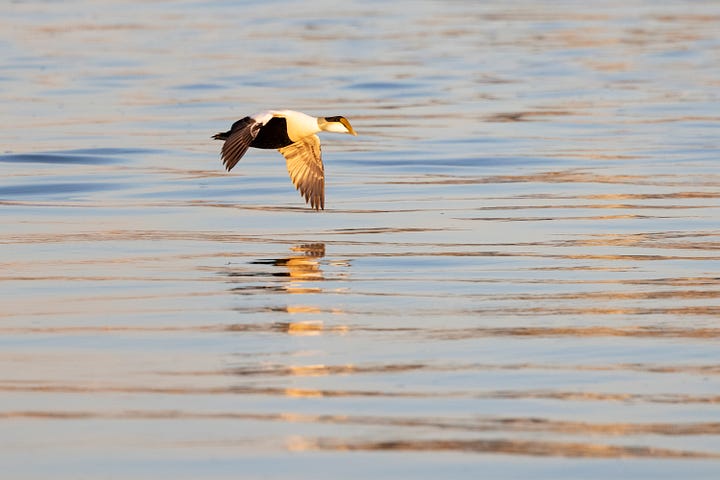
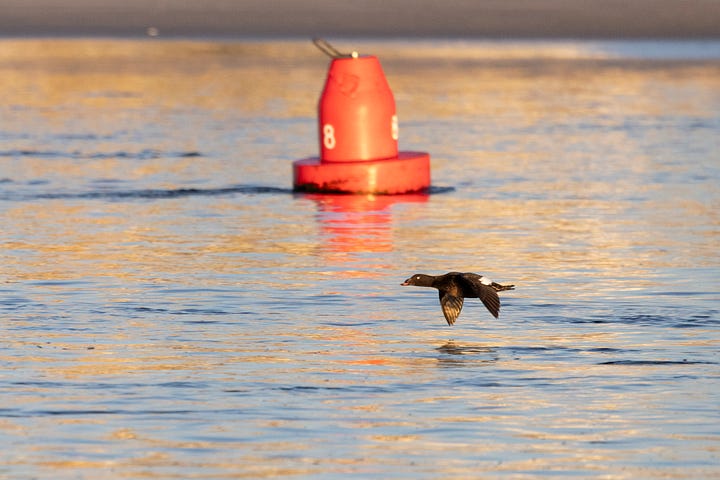
My goal for the morning was to see the long-tailed ducks in breeding plumage. A small flock in the channel displayed all the transitions from the stunning whites and grays of winter plumage to the breeding blacks and browns. One male looked like a different species in his dark breeding finery, another male was still in the bright winter plumage, and a third in the muddy transformative middle. The constant brassy yodeled calls of the males are loud and distinctive, a joyful bright sound that always generates a smile during the long winter months. The ducks were diving and reappearing frequently. I watched them for a while, trying to anticipate which bird would dive next and to learn why sometimes all the birds dove and other times just a few. The apparently bonded male and female pairs often dove together but would resurface more randomly and then quickly reconnect. When the males give a little leap and dive their long thin tail feathers wiggle back and forth before disappearing under the water.
The flock of ducks moved along and I watched the passage of other birds for a while, and also the dark head of a seal that looked about briefly from the channel. A little later, one pair of long-tailed ducks rode the tidal current without diving and passed fairly close to me. I crouched on the barnacled covered rocks and watched through the camera lens, admiring the newly donned plumage, staying as still as possible as the ducks eyed me carefully.
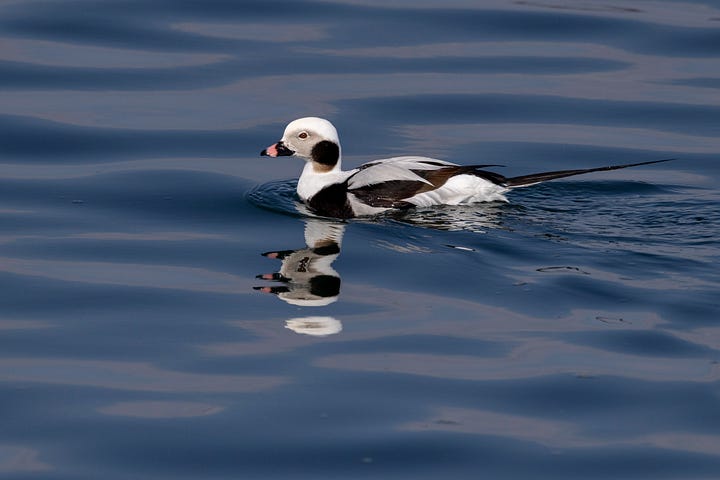

I walked down the next stretch of the beach to look for the piping plovers, the new spring arrivals that will help make up for the loss of the winter ducks. Federally endangered, the plovers have the unfortunate preference for broad sand beaches that attract droves of people and their dogs as the weather warms. They nest along the upper reaches of the beach where the grass of the dunes is less dense, and a rope line already marks the protected area. With a slow approach, the birds are fairly tolerant of people. I heard the eponymous piping call and saw two plovers fly out over the water and then curve back onto a distant part of the beach. Small and beautifully camouflaged with sandy tan coloring, the plovers are endlessly hard to detect when they are still. The sun was in my eyes on the walk out on the beach and I failed to see more plovers. On the return trip, everything was beautifully side-lit and I quickly found a pair of birds on the open beach. One was walking slowly away from me and the little plover was surprisingly broad from this perspective. It was a male with a well-defined, thin, partial black collar draped around his neck. The second bird was a female with a faint collar and her head and back a paler tan that matches the sand perfectly. She sprinted up the beach and her bright legs were just a blur. A little further on, another female sat quietly on the sand near the dunes, its back toward me. I only spotted the plover as it stood out as a silhouette on the rise of the sand. I knelt at a respectful distance and took some photos, watching as she turned her head casually. I knew that the quiet repose still allows for acute awareness of her surroundings, having in the past heard and seen the sudden alarm calls and flattened body position when a raptor flew overhead. The colors of the sloping sand were muted by the early light and flowed over and around the plover. It seemed too soon for a nest but the location and behavior made it possible. With that thought, I rose slowly into a half crouch and backed away slowly to avoid any disturbance.
I headed back to the rocks and the channel where the tide was running swiftly around the corner of the beach, small sticks and seaweed tumbling across the sand. I lingered to savor the light and water and the birds. Red-breasted mergansers passed in pairs, often close enough that I could appreciate the bright red bill. Mergansers fly fast and appear without warning so often my photos only catch them from behind. Today I managed to see a few of the birds approaching and captured the long thin outstretched neck, white wing panels and trailing orange feet. As the light increased, the activity slowed and the rest of the day beckoned. I walked slowly back toward the parking area, pulling in the last scents and sounds of the beach and mudflats and spring-infused birdsong.




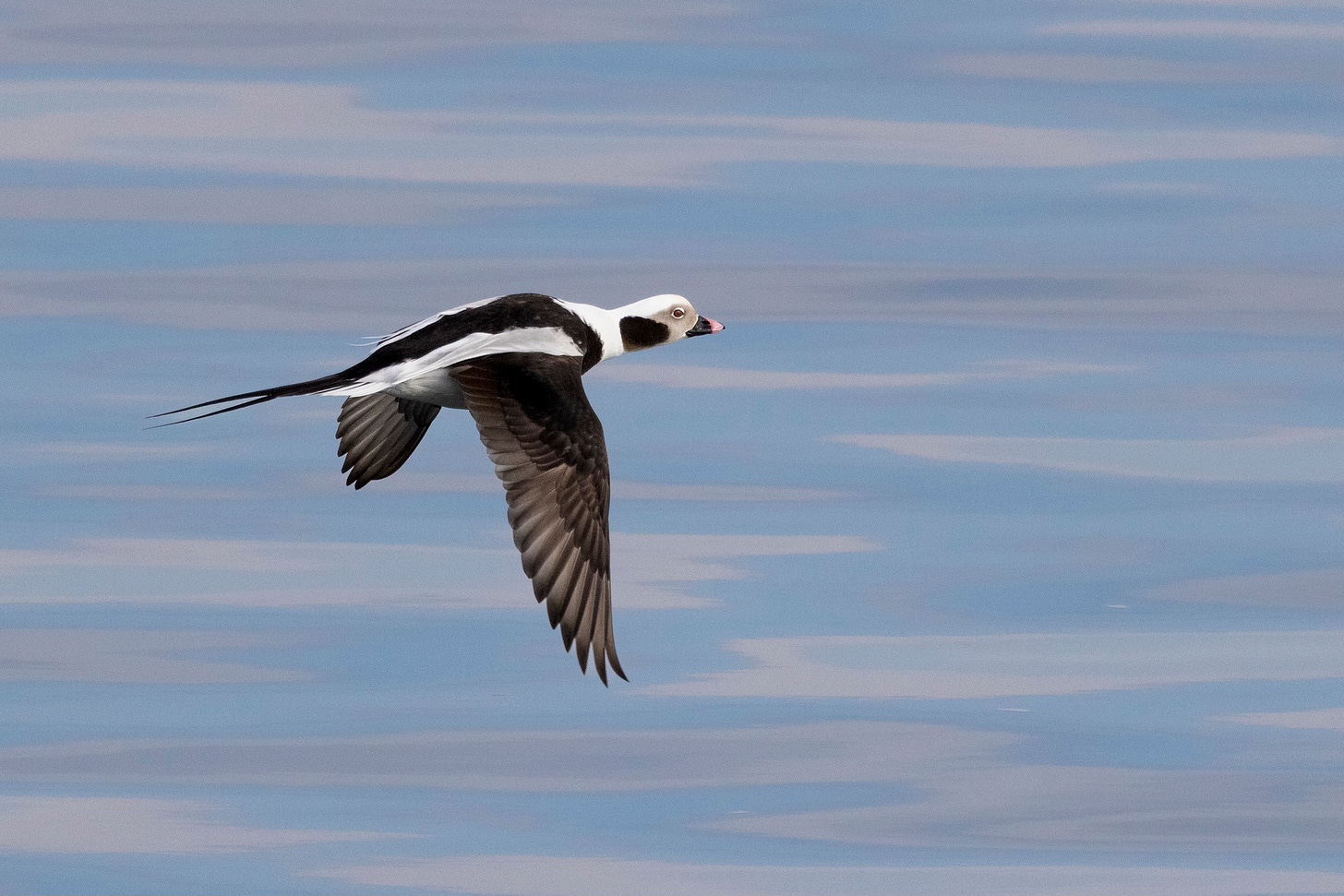
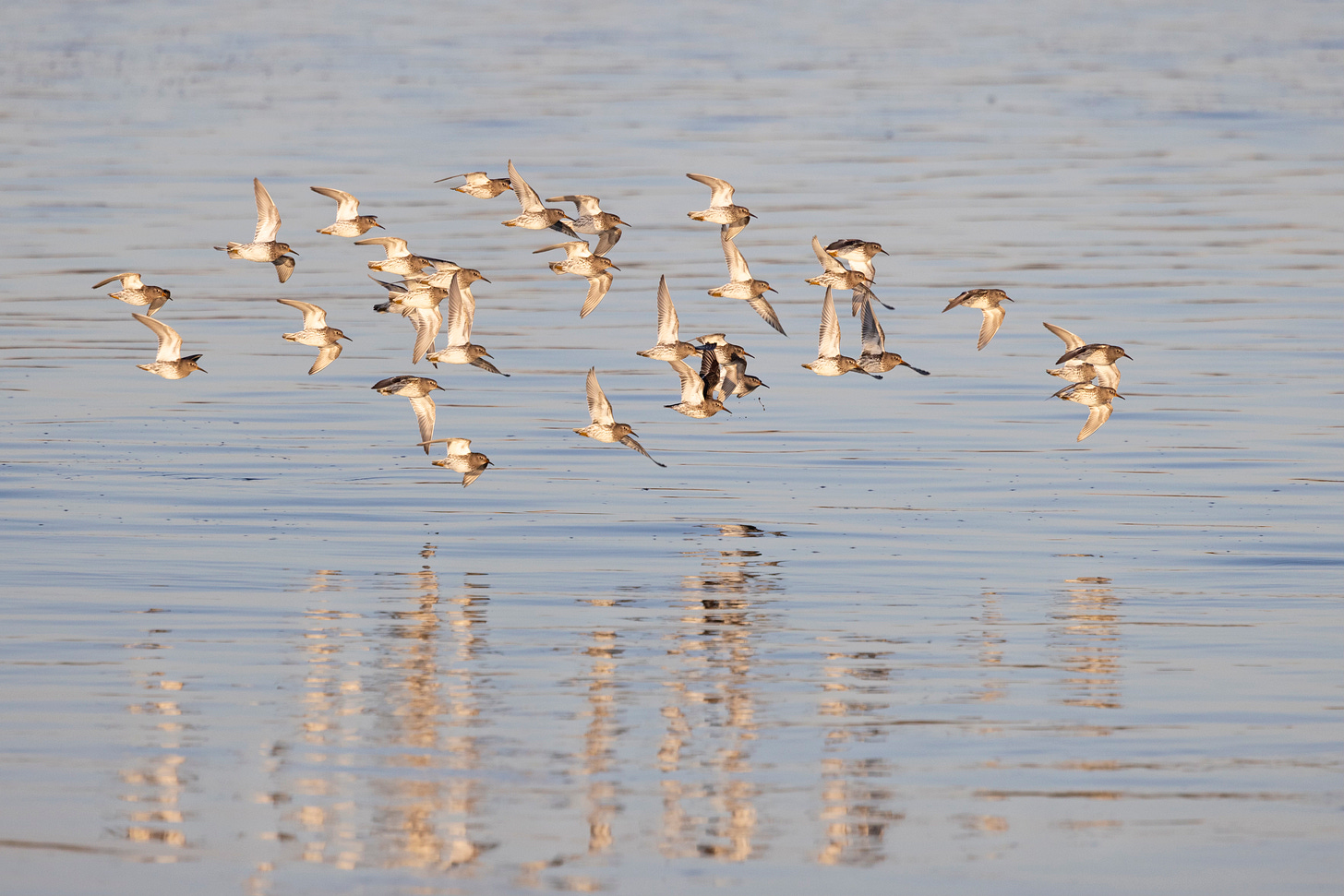
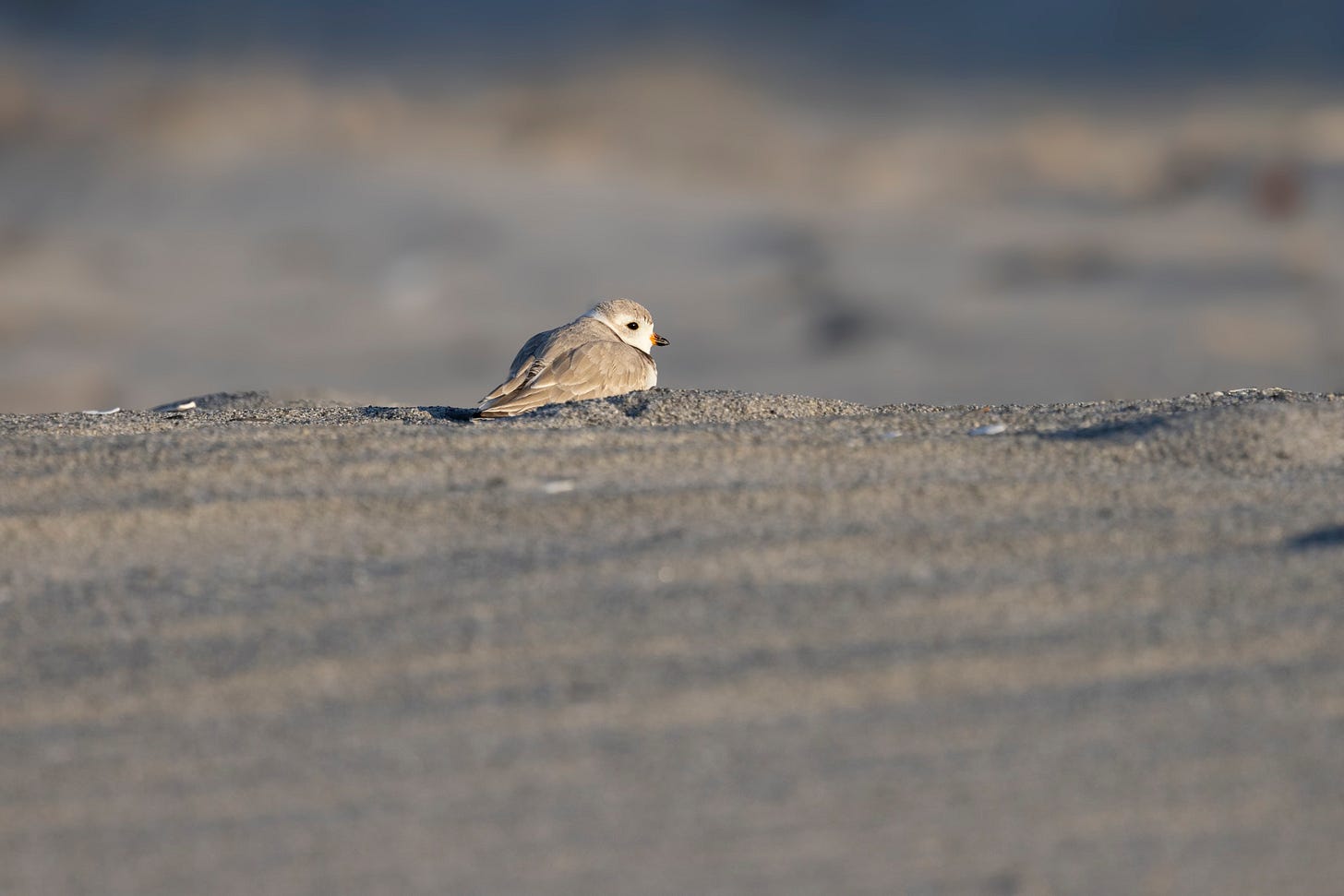
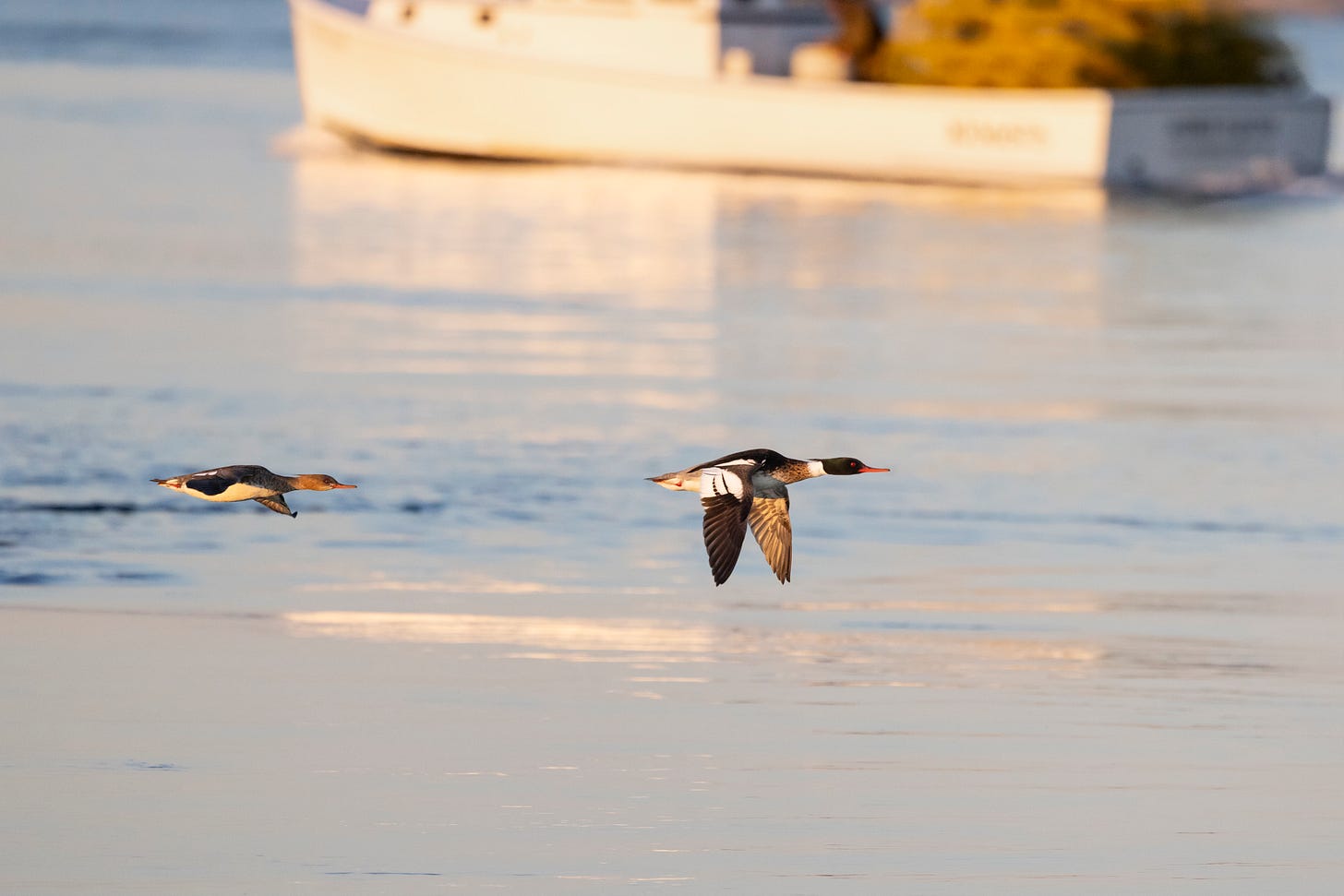
No mediocrity here. Beautiful photos, birds and prose. ❤️
I love the way you write! I feel like I'm right along side--and, of course, I've had similar experiences. This made me smile in recognition, "The eider and white-winged scoters drove me a bit crazy with their unexpected bursts of noisy takeoffs, catching me in the valley of mediocrity between photography and birding as I failed to do either one well." And your respectful visit to the Plover--and well--the whole piece. Bravo!